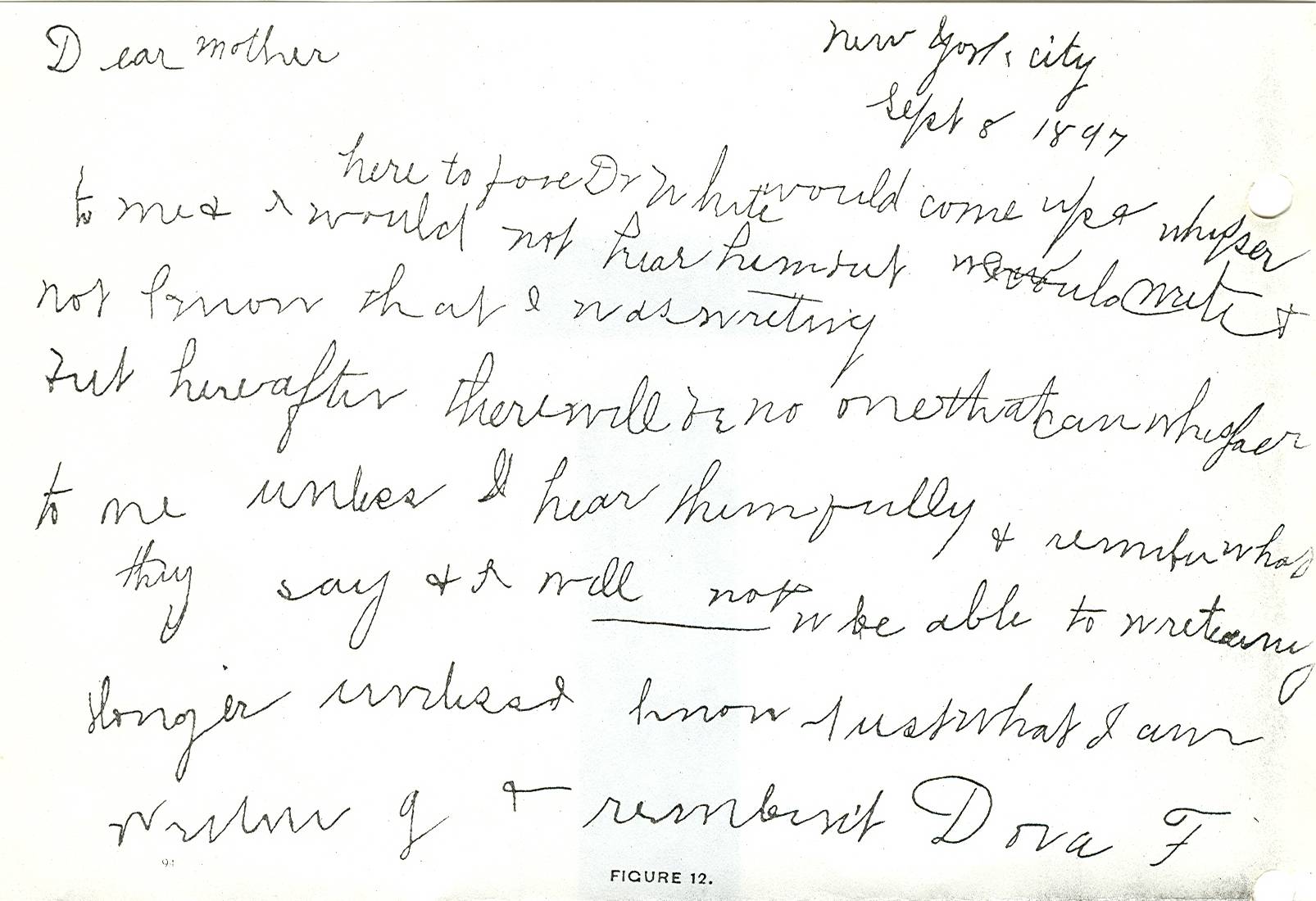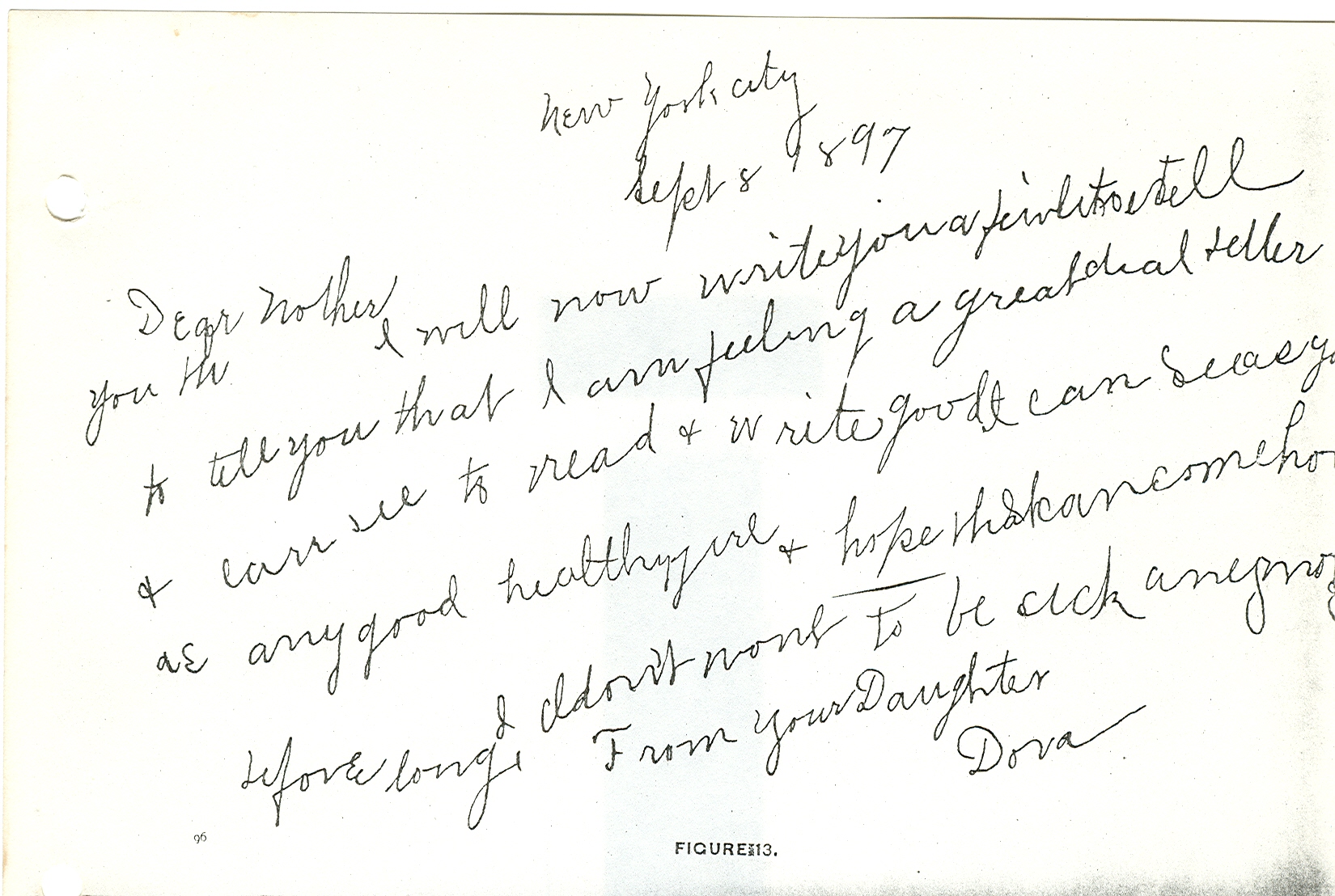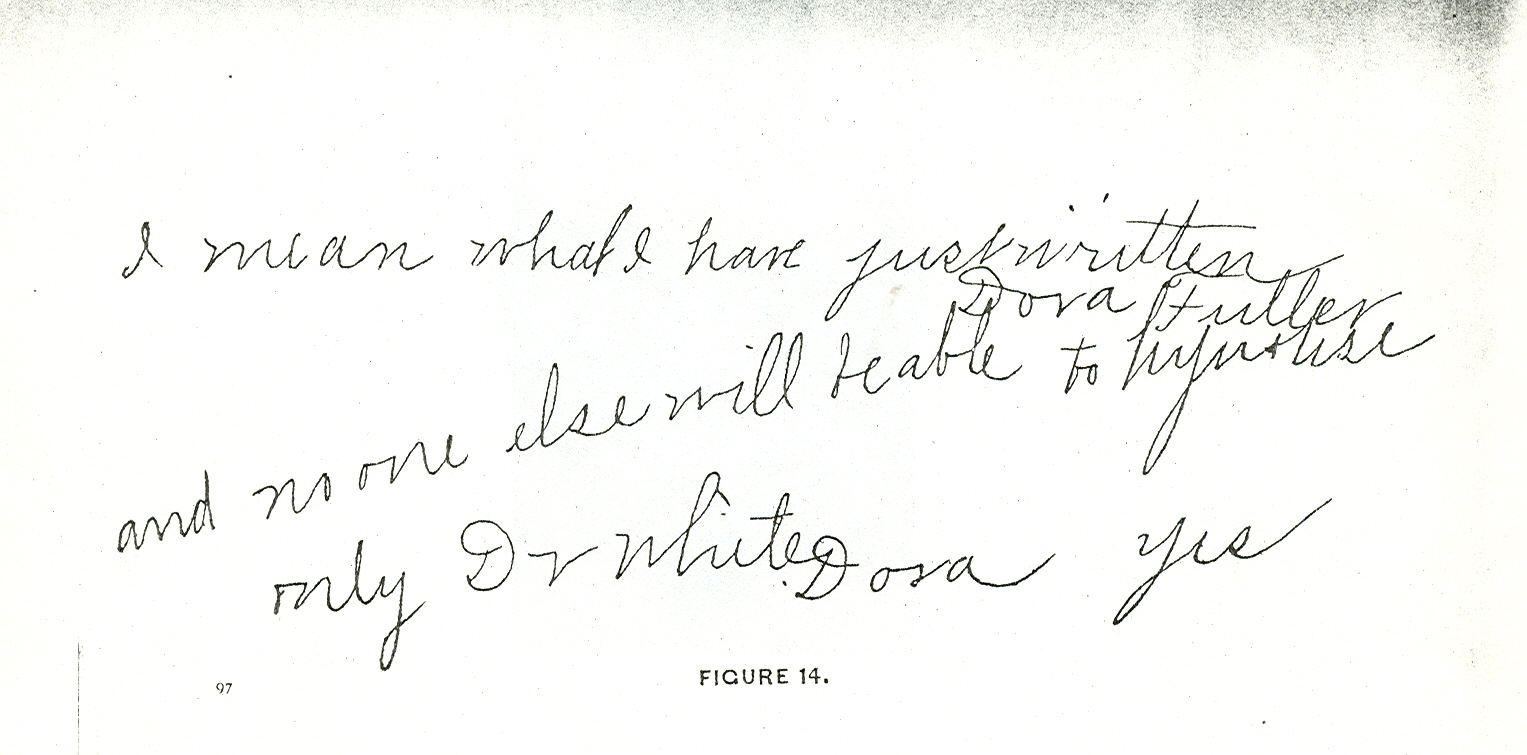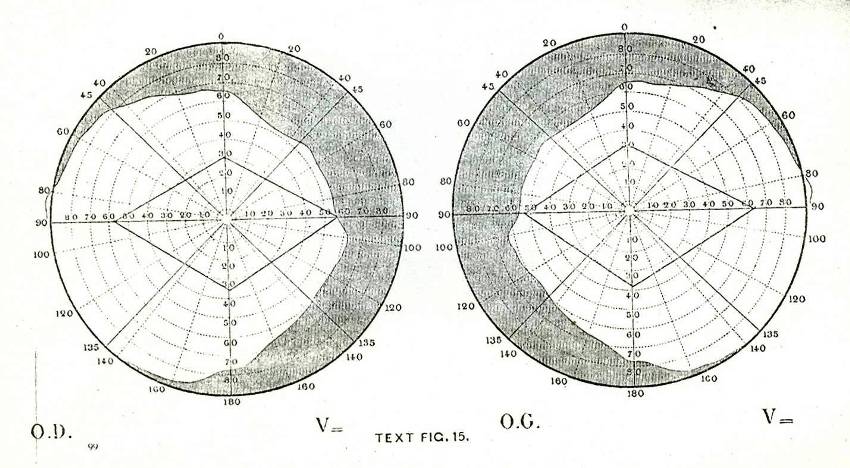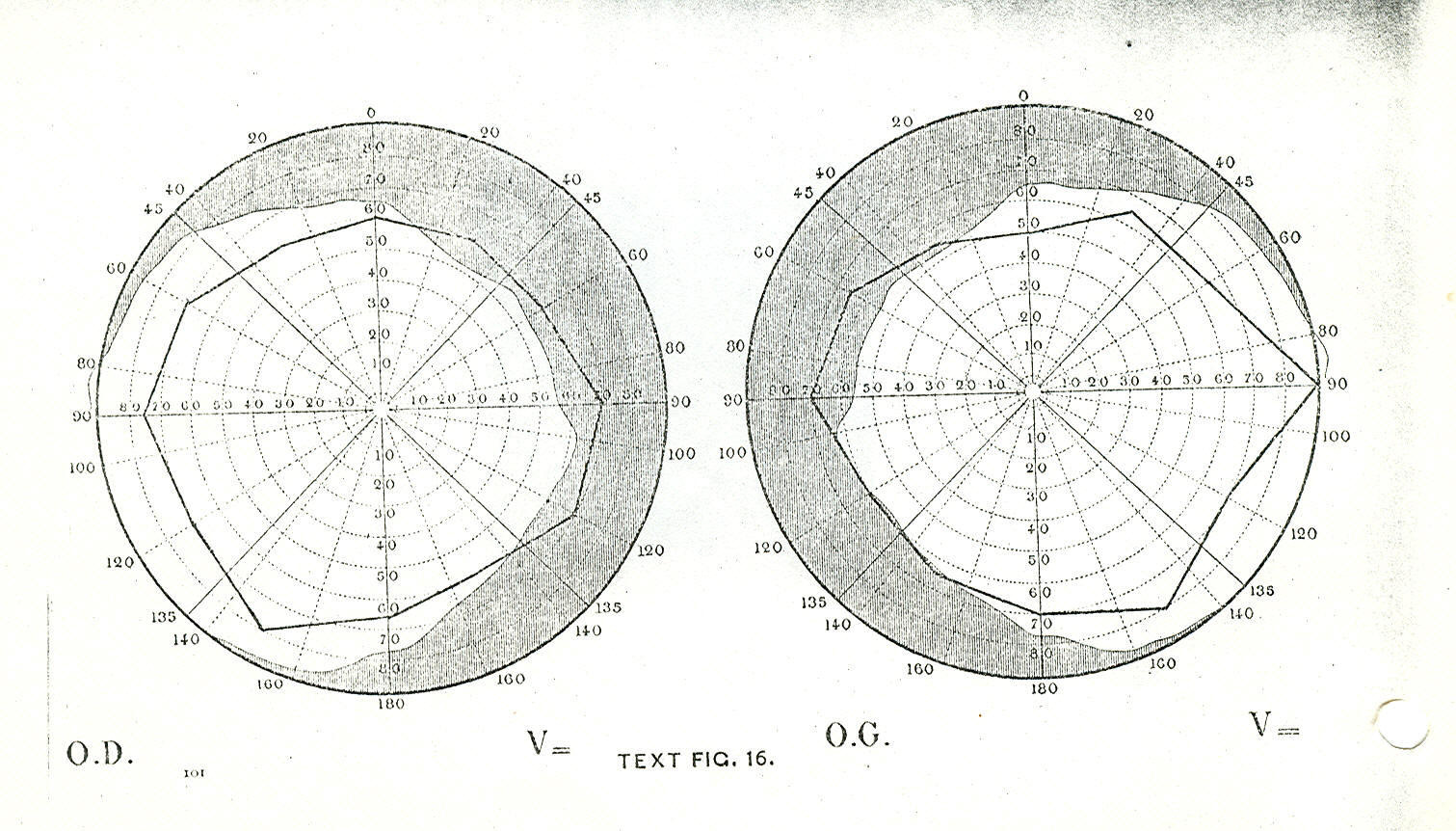| Home
Boris
Sidis Archives
Table of Contents Next
Chapter
CHAPTER XII SYNTHESIS OF DISSOCIATED SUBCONSCIOUS SYSTEMS AN attempt was now made to run together the patient's dissociated mental systems. As it was pointed out before, suggestions given to the patient during hypnosis could not bring about a permanent effect of synthesis. The patient could not be suggested in the waking state, nor was it possible to give her any permanent suggestion by the method of distraction, nor by the method of automatic writing in a manner that could bring about a satisfactory result. One can easily see the reason why it is impossible to effect by means of suggestion an association of a disaggregated consciousness, when the patient is in the state of distraction, or when the patient is carrying on automatic writing, or when in a state of hypnosis, because any of these conditions are themselves states of dissociation that have not the power, or rather the possibility, of effecting a synthesis with states from which they are dissociated. It would not do to address oneself to a dissociated state to effect a synthesis. In the case of the hypnotic condition, it is true, all the states are more or less present, and a suggestion, if it be emphatic enough, might effect some result. If, however, we consider the fact that hypnosis itself presents a state of high psychophysiological plasticity, that in this state systems are not very stably organized, are continually shifting in their associations and dissociations, we can see the reason why suggestion in hypnosis can not possibly give permanent results. What then shall be our course? How can we bring about an association of disaggregated systems so that the synthesis shall be of a lasting character? Evidently, the synthesis must take place in a state in which the dissociated systems are all present, and which is not of the plastic hypnotic character. In other words, we must put the patient in a state in which she herself shall have control of her experiences. In short, the patient must be put in a more or less normal condition. But this condition must be of such a character as to make possible an access to the patient's consciousness. This intermediary state must therefore be a sort of mental ground on which the dissociated systems may meet, be balanced, controlled by the patient's own activity. The nearest approach to it can be found in normal sleep. Not exactly in the deep normal sleep where functional activity altogether ceases, but in those sleeping dream states, when one begins to emerge from the deep levels of sleep, and is on the way to pass into the waking state. It is the borderland between the sleeping and waking condition. Our course was in accordance with this general plan. We attempted to put the patient into a normal sleeping state, and in order to be in touch with the patient during this condition, this sleeping state was approached through the induction of hypnosis. The patient was hypnotized, and it was suggested to her that when the pneumograph was attached to her and ready for use she would fall into a natural sleep. This she did. When spoken to by Dr. S. or Dr. W., she did not answer. Pneumographic tracings were taken during sleep. (Plates VII and VIII.) Pencil and paper were given her and she spontaneously wrote her experiences. During this writing the pneumograph showed great disturbances. Counting in her presence produced respiratory disturbances in rhythm with the sounds. While the patient was in this state of sleep, conversations were carried on with her and she was able to hear and feel all the stimuli given her. There were no systematized anęsthesias to objects or persons. The writing was carried out by her voluntarily and spontaneously and she was fully conscious of what she was doing.
Opportunity was taken now to bring together in synthesis the dissociated states of consciousness, and two letters addressed to her mother were dictated to her, one by Dr. W. and the other by Dr. S. The letter of Dr. W. was to the effect that when any one whispered to her she would be fully aware of what was said, and that she would no longer write unless she knew perfectly what she was writing. (Figure 12.) The letter of Dr. S. was for the purpose of arousing the energy and will of the patient and insisting on the fact that she would try and not be sick any more; in short, that she should make the attempt to bring into association the dissociated systems. (Figure 13.) It was the awakening of the patient's spontaneous energy coming from the depths of her own being. That this energy was really awakened and the synthesis voluntarily formed by the spontaneous activity of the patient herself are well shown in the interesting and highly suggestive lines which she herself volunteered after the letter was finished, as if to emphasize distinctly that what she had just written by dictation was not a matter of a passively accepted suggestion, but of a spontaneous, voluntary, active, energetic resolution. The resolution was especially well seen in the way she wrote it. The pencil was firmly grasped in the hand, and she wrote quickly and with determination the following sentence: "I mean what I have just written," and signed her name. (Figure 14.) After she wrote this, she was allowed to sleep for some time and finally was awakened by a noise accidentally made by one of us in dropping an object. In addition to the pneumographic tracings I and 2, Plate VII, which show well the tracings of normal sleep in contrast to those taken in hypnosis, there is here also another proof of the patient being in a state of non-hypnotic normal sleep in the way in which she awoke spontaneously by an accidental noise, which would not have wakened her in her hypnotic state. On awakening. all attempts at distraction by getting her to read, and whispering behind her to write something, failed. (Plate VIII.) She did not know what she had read, but heard everything said to her. She was then hypnotized by Dr. W., and an attempt at distraction and automatic handwriting again failed. During hypnosis, to reinforce the patient's resolution and formed synthesis of the dissociated states, she was told that if anyone whispered to her from behind, even Dr. W., she would hear perfectly what he said, also that she would no longer write unless she knew what she was writing, also that her eyesight would be as good as anyone's, and that she would feel perfectly well. She was also told that she would remember everything hereafter that happened during hypnosis. She was told she could hear Dr. S., and when he spoke to her she heard him. She was told she could remember what occurred in the natural sleep just recorded; and she recollected everything. Dr. W. then told her he would awake her by counting slowly from 1 to 75, and that she would get more and more awake as he approached 75, and wake at 75. Dr. W. counted from 1 to 25 and repeated the suggestion as above, then from 26 to 50 and repeated the suggestion again, then from 51 to 70 and repeated it again, and then from 71 to 75 and she awoke. On awakening, she remembered all that had happened in hypnosis, but could not recollect what had happened while in normal sleep. Dr. W. hypnotized her again and told her that on awaking she must remember all that had occurred in the normal sleep. Dr. W. then awoke her slowly, counting from 1 to 30, and pausing to repeat suggestions about distraction, automatic writing, eyesight and health, etc., and also about remembering what happened while in normal sleep. Pauses to repeat these suggestions were made at 10, 20, 27, 28, and 29, and she awoke at 30 with complete recollection of all that had happened during hypnosis and natural sleep. Tracings were taken during the first, but not the last hypnosis. The field of vision, taken immediately after attempts to run together the dissociated systems into one, was markedly enlarged (see Chart, Figure 15). The field of vision kept on expanding. A comparison, with a field of vision taken eight days afterwards, showed that it was still slightly contracted. This latter field reached the limits of the normal standard (see Chart, Figure 16). The patient evidently was recuperating her energy slowly. The synthetic process was going on continually, resulting in a more stable, more permanent synthesis of the disaggregated systems, causing a loss of the phenomena of automatic writing, subconscious answers, and giving rise to a larger and more. extensive field of consciousness: Eight days later, the following extract from a letter, sent by Dr. W. to Dr. S., gives an account of the patient's state and her field of vision: "Enclosed please find visual field of D. F., taken this day1; also a visual field for comparison, taken on the 26th of June last. (Figure 1.)
"In addition, I have made the following experiment to-day: "Experiment 1.―Patient was placed at side of table and given paper to read aloud. Attempt to distract her by speaking in a low tone of voice from behind and requesting her to write produced no result. I also took hold of her hand, placing a pencil in it. When questioned afterwards, was able to recollect all I had said to her and had felt me touch her hand. An attempt afterwards on her part to both read aloud and write her name at the same time proved her inability to do it. "Experiment 2.―Hypnosis; eyes shut. I spoke to her several times; Mrs. S., who was also in the room, spoke to her, but D. F. gave no response, and said, in answer to my questions, that she did not hear her. When awakened she could remember everything I said, but did not remember anything that Mrs. S. had said until I insisted that she should, whereupon recollection was complete. "Experiment 3.―Hypnosis; eyes open. Asked whom she saw in the room, replied, 'Dr. W. and Mrs. S.' Eyes shut, I make several remarks to her; Mrs. S. also speaks to her, but she does not reply, and says, in answer to my questions, that she heard nothing. During the hypnosis, a third person comes to the door of the room and speaks to me. Awakened, memory of all that I said was complete; she was also able to recollect everything that Mrs. S. and the third person who came to the door said, but said that she had not heard them speak during hypnosis, and at present, although she detailed to me every portion of the conversation which occurred, she had no means of knowing whether such conversation was the correct one or not."
Dr. S.'s advice was not to continue any hypnotic experiments with the patient, so as not to disturb the equilibrium of the synthetized systems and thus run the risk of new dissociations. The patient is now in good health. Organic functions work regularly and normally, and there are no disturbances either in the waking state or during sleep. The patient has been working during the summer of 1898 and is now attending school. Since her discharge from the hospital she has had no return of any of the symptoms which led to her committal. The patient's mental condition remains normal and there has been no recurrence for the period of five years of the contraction of the field of vision.
__________ 1. September 24th. This chart showed a fully normal field of vision.
|
